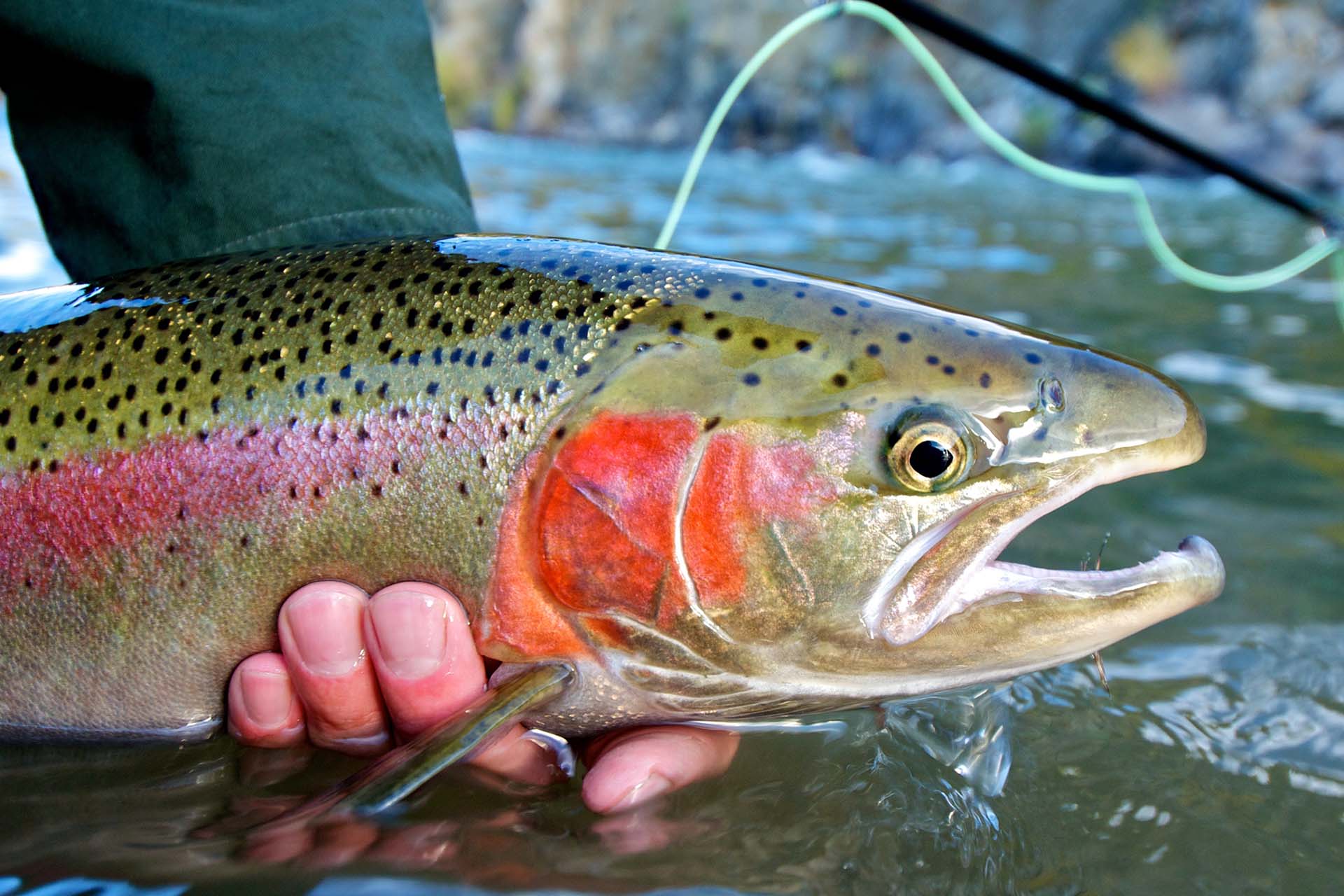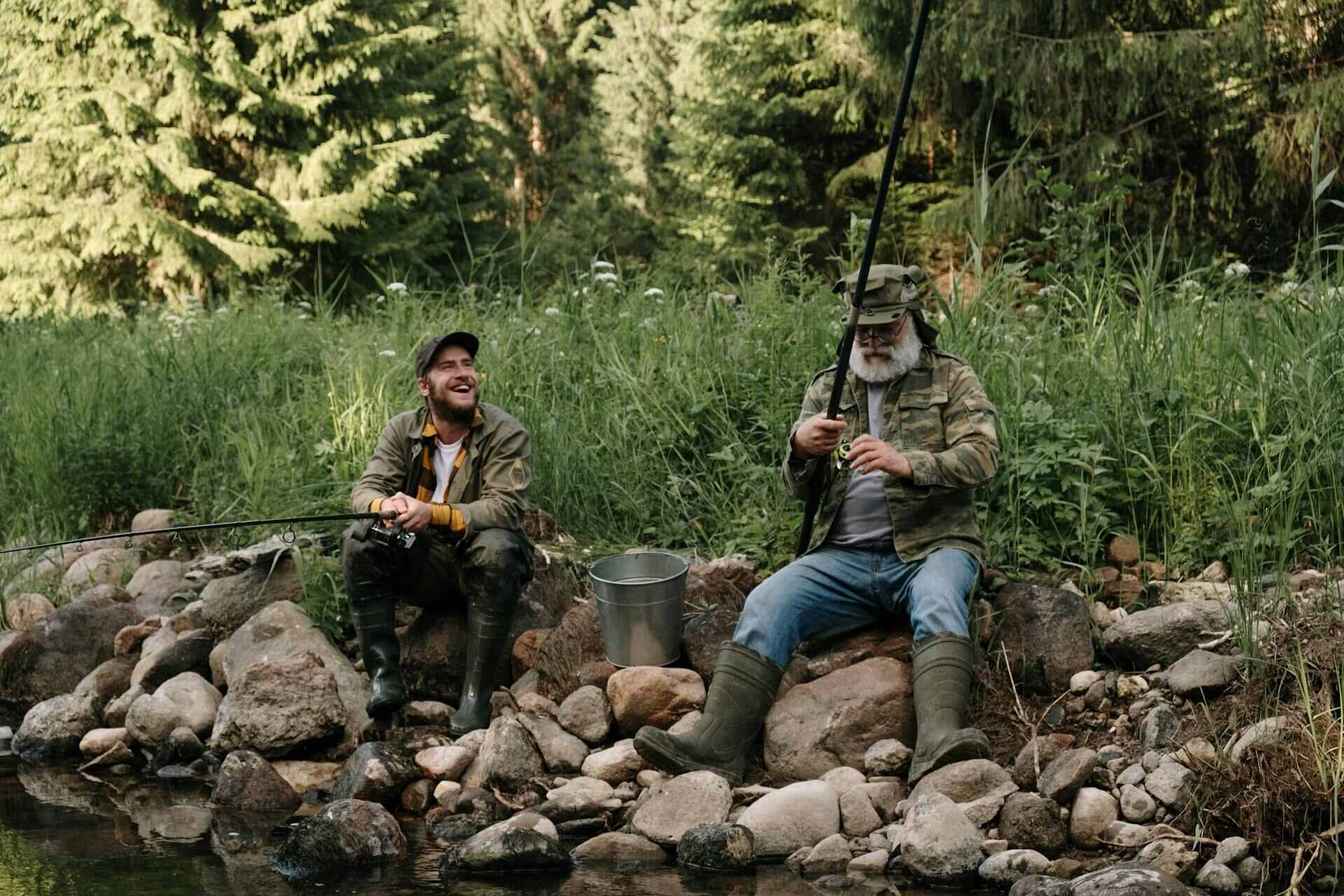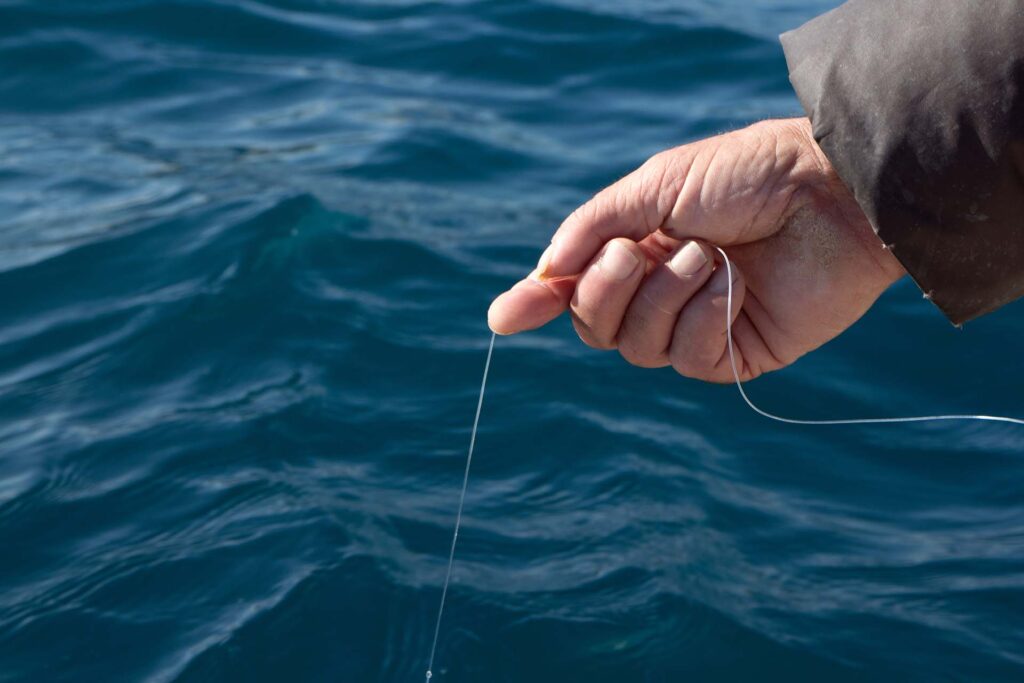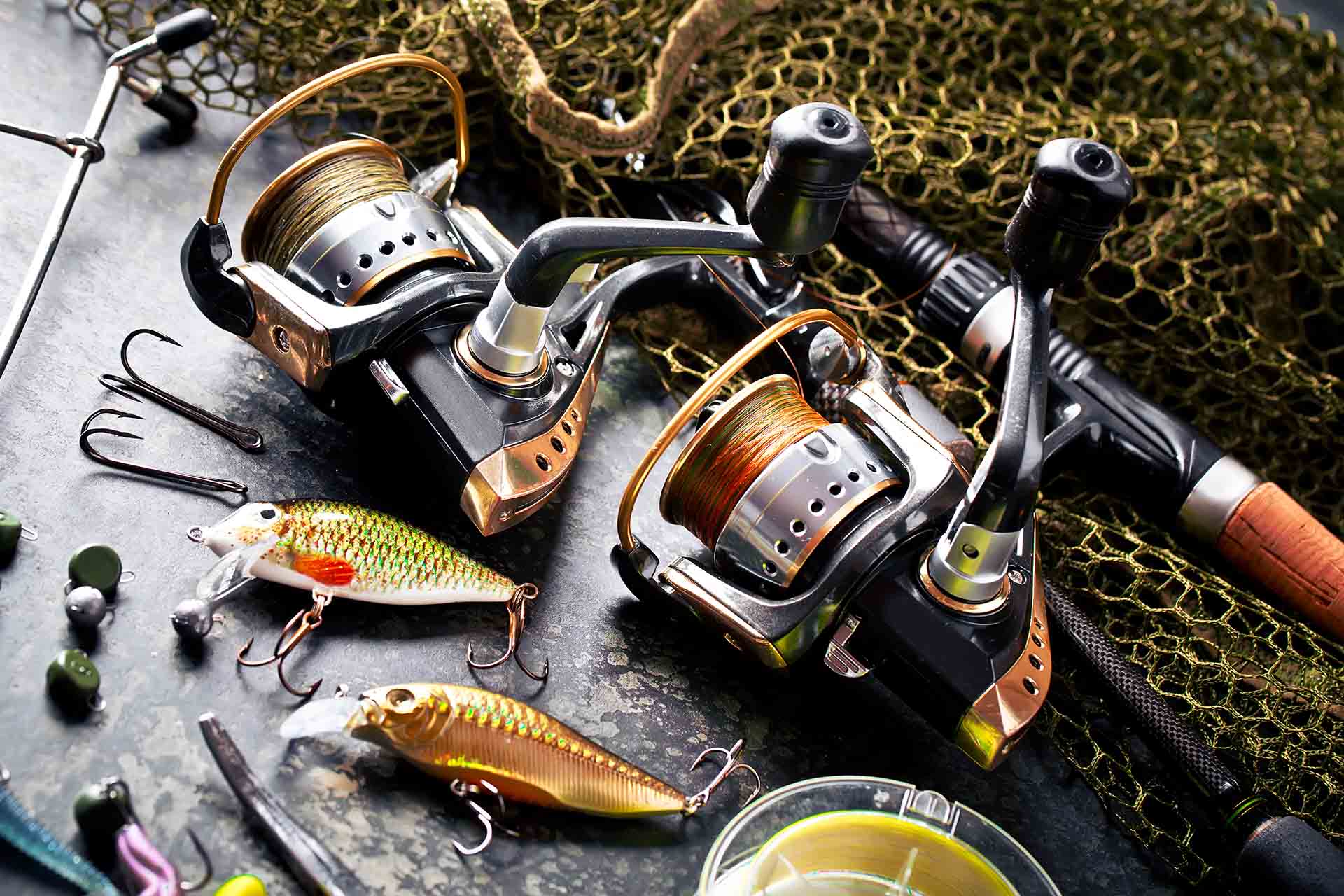Contrary to popular belief, casting a hook and landing a catch when fishing can be done with many different techniques. If you’re just starting to discover the wonders of this exciting outdoor activity, you’re probably wondering – what is fly fishing, and how does it work? Here’s everything you need to know about this interesting way of catching a fishy surprise.
Fly fishing is a particular style of angling that entails using special equipment and a lightweight lure to create a convincing impression of a fly or an insect in nature. The casting technique differs greatly from traditional ways of doing it, so it can be difficult for a beginner to pick up. However, once you get the hang of it, you’ll realize that this type of fishing is truly special. So, let’s see what it’s all about.
What Is Fly Fishing? Is It Just Another Technique or the Only True Way of Landing a Catch?
Angling for a catch has almost infinite possibilities – spinning, bait casting, surfcasting, and many more. Among all of these types of fishing, there’s one angling style that stands out – a technique called fly fishing. For some, it’s an exciting new way to land a catch, while for others, it’s so peculiar that they consider it an art form and the only true way to do it.
Fly Fishing Is All About Mimicking the Natural Movements of an Insect
Naturally, the first thing you’ll wonder about this angling technique is – why is it called fly fishing? The answer to this question is very simple – the name stems from the fact that this technique is all about creating a convincing presentation of a fly in nature.
A lightweight lure, or in simpler terms, an artificial fly, is presented on the water’s surface or slightly below it. This entails not only a special casting technique but also a whole equipment setup made specifically for this style. So, the larger part of this crash course will be spent discussing the gear because doing so can create a clearer picture of what fly fishing is all about and also in which ways it differs from the more traditional ways of fishing.

Creating a Natural Impression of a Fly Requires Special Equipment – The Casting Technique Is Far From Traditional
Of course, to cast a lightweight lure, you need to attach it to the right gear. So, besides the artificial fly, the main parts of any fly fishing setup are a rod, reel, and a special weighted line made from several different fishing lines.
It might sound overwhelming for anyone that is just getting into the basics of fishing, and that’s completely normal – there’s just so much to learn. Aside from familiarizing yourself with the gear, this special technique can be best understood when compared to the traditional ways of angling.
Fly Fishing Works Quite Differently From Your Average Cast-And-Reel Technique
A hook, weights, a float, and a lightweight fishing line – that’s all you need to land a catch in the most common way. While there are many different types of hooks, all of them submerge to a certain depth in the water, depending on what you’re planning to catch for dinner.
Compared to that, fly fishing is quite a different technique. As mentioned before, the lightweight lure sits on top of the water or slightly below the surface but never reaches far depths. As it has no weight itself, special equipment is used to create a delicate presentation and end up with a fishy surprise.
This Technique Is Perfect for Fishermen Who Want to Bring a Bit More Excitement to the Whole Ordeal
There’s no sitting in a boat or on a bank when it comes to fly fishing. This is a very active way of angling, perfect for those who like to get down and dirty. You’re standing in the middle of a rushing stream and casting over and over again using smooth and fluid movements.
Also, there’s not one single way to cast – there are actually many variations for this technique. That makes it difficult to get the hang of at first, but with the right gear and a little bit of practice, it’s completely possible.
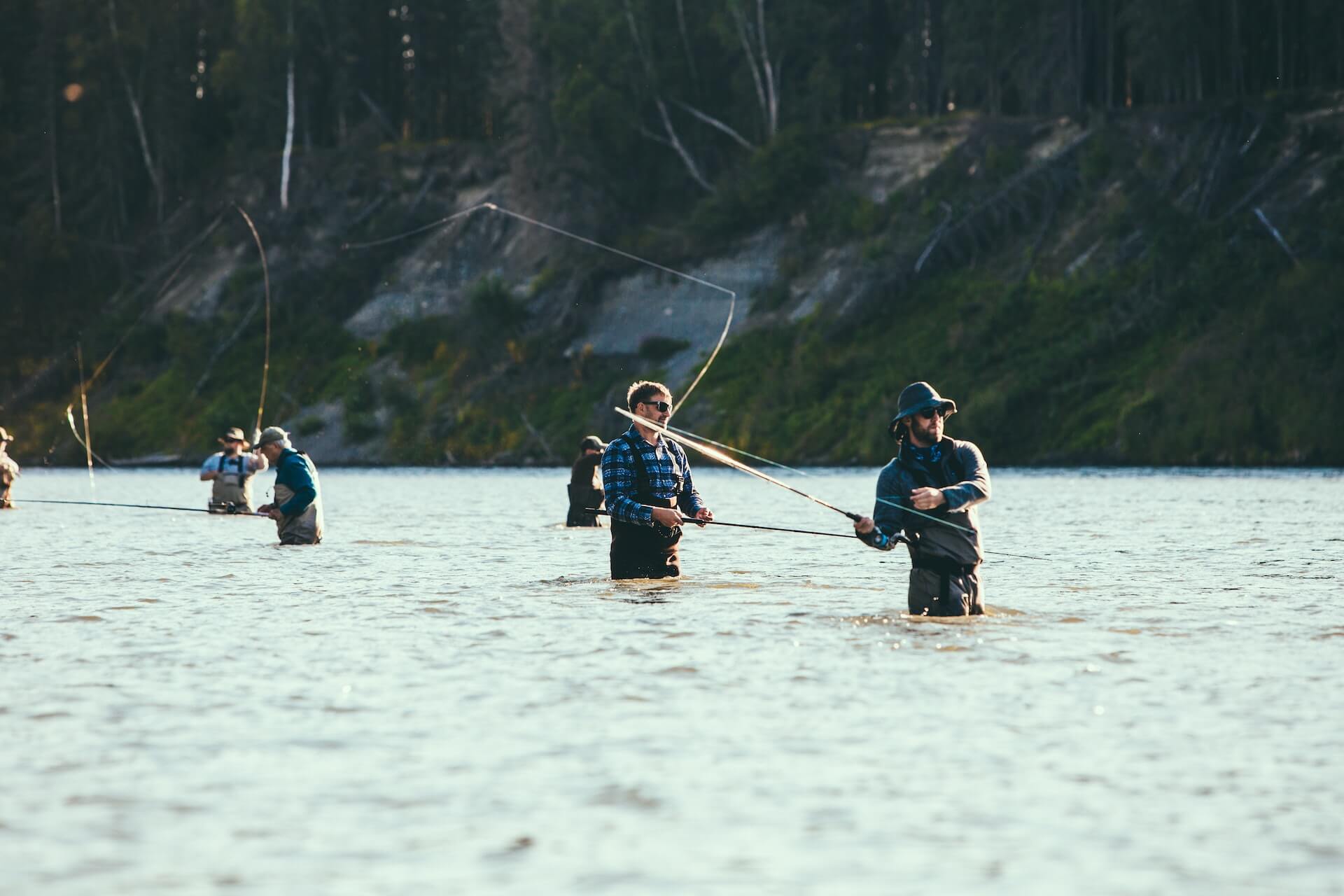
Handling a Lightweight Lure Requires a Special Kind of Fishing Rod
Fly fishing rods are much longer and more flexible compared to traditional ones. Usually made of graphite, about 9 to 11 feet long, these rods are specially designed to achieve longer casting ranges and delicate presentation. Here are the key features you need to keep in mind when choosing a rod for this particular style:
- Action – the most important indicator of the rod’s flexibility as it describes the speed of bending and recovery, split into three categories slow, moderate, and fast,
- Length – influences the casting range, line control, and what you can target,
- Weight – influences the size of the lightweight lure and the target.
The Fly Fishing Line Consists of Several Different Lines
Besides the rod and the adjacent reel, this technique relies on a special fishing line that is actually made of several different pieces. That’s because having a smooth transition all the way down to the lightweight lure is of utmost importance if you want to successfully create a delicate presentation of an insect.
Some might try to convince you that using regular lines will work just fine, but that’s far from the truth. Every experienced fisherman knows that creating a line from scratch to catch is the only possible way. Sure, you might get lucky without it, but that luck will quickly run out.
Here’s what makes the fly fishing line, from the rod all the way to the lightweight lure:
Backing Is an Optional Part Added for Bigger Targets
When you’re targeting a big catch, the rod shouldn’t be directly connected to the fly line but attached to an additional part known as the backing. The special sort of polyester called dacron from which the backing is made gives it additional breaking strength and casting range. It’s usually somewhere between 10 to 30 lb and 70 to 90 yards.
Fly Line Is Connected Directly to the Rod if There's No Backing
When there’s no need to attach the backing for some additional strength, the fly line is connected directly to the rod. That setup might not be able to catch the biggest secrets hidden in the waters, but it’s still strong enough to handle some larger targets.
More important than strength, however, is that the fly line needs to be flexible enough to easily create fluid motions needed for delicate presentation. It’s the first piece of equipment that makes way for the smooth transition to the small lure, but it’s very far away from it. That’s why fly lines can be any color, even bright fluorescent – that makes it easier to see for you, while the fish can’t see it. After all, the lure on the water’s surface is much more enticing in their world.vv
Leader Line Is the End Part of the Fly Line
At the end of the thicker fly line, the leader line is there to ease the transition to the more narrow tippet on its end. With a length of about 8 to 12 ft, the leader line also prevents the heavier fly line from slapping the surface of the water and potentially scaring the fish. This level of subtlety when casting would just not be possible with a regular line.
Tippet Is Attached to the Lightweight Lure
We’ve almost made it all the way to the artificial fly – the tippet is the only piece of equipment separating us. Connected to the leader line on one side and the lightweight lure on the other, the tippet is a really thin nylon line that is virtually invisible to your potential catch. That’s all the flexibility and transparency you need to successfully create an impression of a fly.
There Are a Few Types of Lightweight Lures, and Their Usage Depends on Location and Specific Circumstances
So, we’ve reached the surface of the water, and there’s only one thing left – the lightweight lure. You can get a store-bought product or take the DIY route and make the lure yourself using feathers, fur, or other natural materials.
The Type of Artificial Fly You Use Depends on a Few Different Factors
To successfully create a natural presentation, it’s important to know what kind of lure is best for each scenario. That’s simply due to the fact that every species of fish has its own way of hunting for food, so there are different ways to attract each catch. Besides the targeted fish, it’s important to take into account the location and the water conditions as well.
The Lures Are Usually Divided Into Three Different Categories
There are countless designs of lightweight lures made for fly fishing, and the most basic distinction is between these three main categories:
- Dry flies – the most common lure, designed to float on the surface and impersonate an insect landing on the top of the water,
- Nymphs – designed for a special technique called nymph fly fishing, where the lure floats just beneath the surface of the water,
- Streamers – designed to imitate small fish or other forms of aquatic life such as leeches.
There’s also one important way to categorize fly fishing lures – they can be imitative or attractive. The former is designed to closely resemble the natural food of what you’re trying to catch, while the latter triggers the instincts of the bigger, predatory fish and gets them to bite.
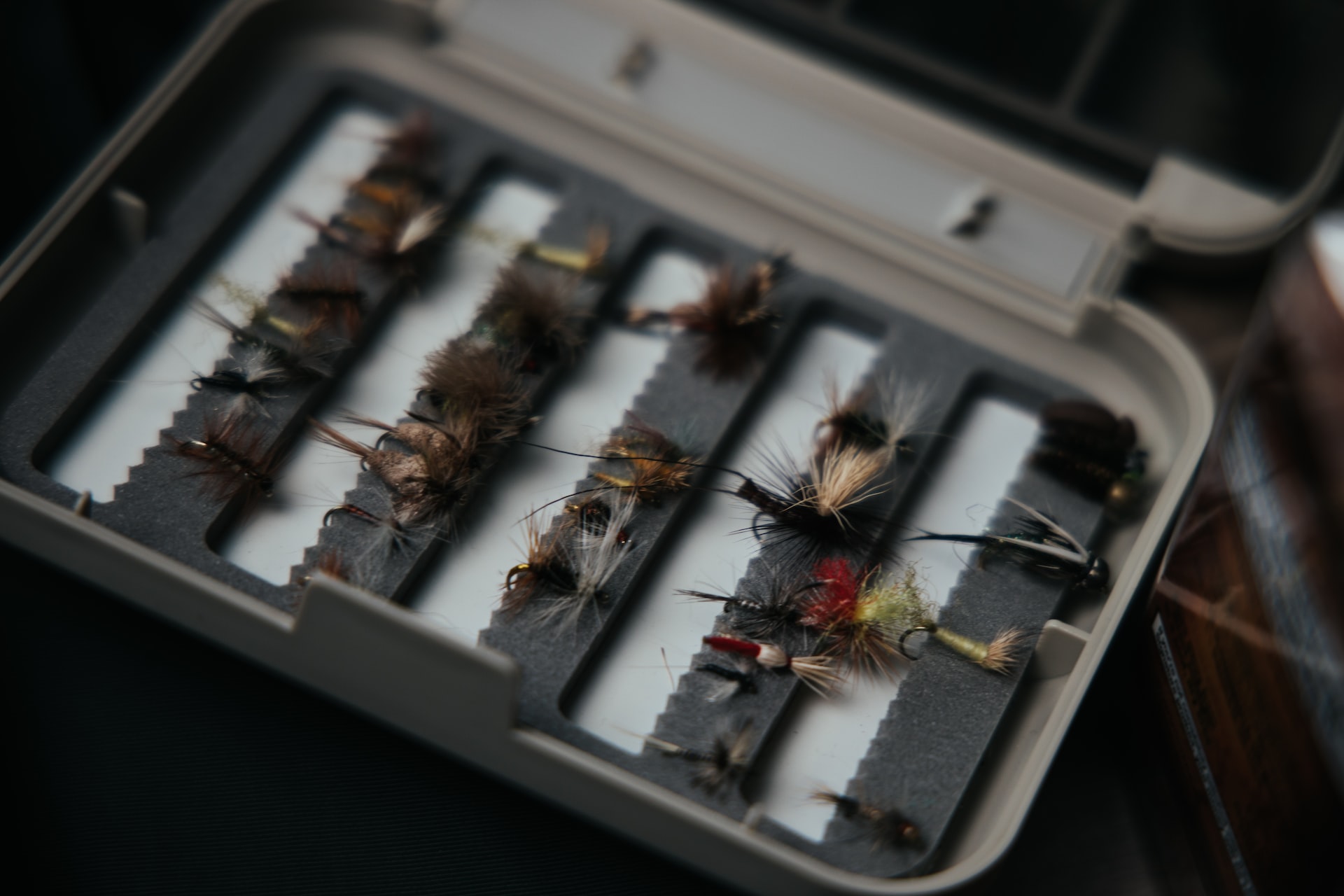
All That Gear Doesn’t Amount to Much if You Don’t Know the Right Way to Match the Different Pieces
The truth is, all this knowledge about different pieces of equipment is completely useless if you don’t know how to properly set it up and use it. You can have the most expensive gear on you, but you won’t be landing catches anytime soon if it’s not matched well.
The fishing rod, reel, fly line, leader, tippet, and lure – all these parts have their specific purpose and need to be properly attached to one another in order to make the most out of the experience.
There Are a Couple of Charts and Systems That Will Help You Match Your Equipment
All that mixing and matching is bound to be really confusing for anyone that is just starting to dip their toes into the fly fishing waters. Luckily, most products include charts and systems that serve as useful guides for beginners.
One example of these guides is the so-called X system, which can help you understand the types and sizes of gear you need to match. Here’s how it looks:
| Tippet and Leader Size | Fly Size | Breaking Strength | Possible Targets |
|---|---|---|---|
| 0X | 1/0, 2, 4 | 15.5 lbs | Steelhead, Salmon |
| 1X | 2, 4, 6 | 13.5 lbs | Permit, Redfish |
| 2X | 4, 6, 8 | 11.5 lbs | Large Bass |
| 3X | 6, 8, 10 | 8.25 lbs | Large Trout, Bass |
| 4X | 12, 14, 16 | 6 lbs | Trout |
| 5X | 14, 16, 18 | 4.75 lbs | Trout, Panfish |
| 6X | 16, 18, 20, 22 | 3.5 lbs | Trout |
| 7X | 18, 20, 22, 24 | 2.5 lbs | Trout, Panfish |
| 8X | 22, 24, 26, 28 | 1.75 lbs | Trout, Panfish |
Knowing the Basics Is Enough to Take a Test Run – Practice Makes Perfect
Obviously, this isn’t all there is to know about fly fishing – you could literally write a whole book about this exciting technique of angling. However, now that you’re familiar with the basics, that’s more than enough to go out and try it for yourself. While you might make mistakes that will require you to remove a hook from your finger, if you’re dedicated to the craft, you’ll be an o-fish-ial fly fisher pro in no time. Good luck!


